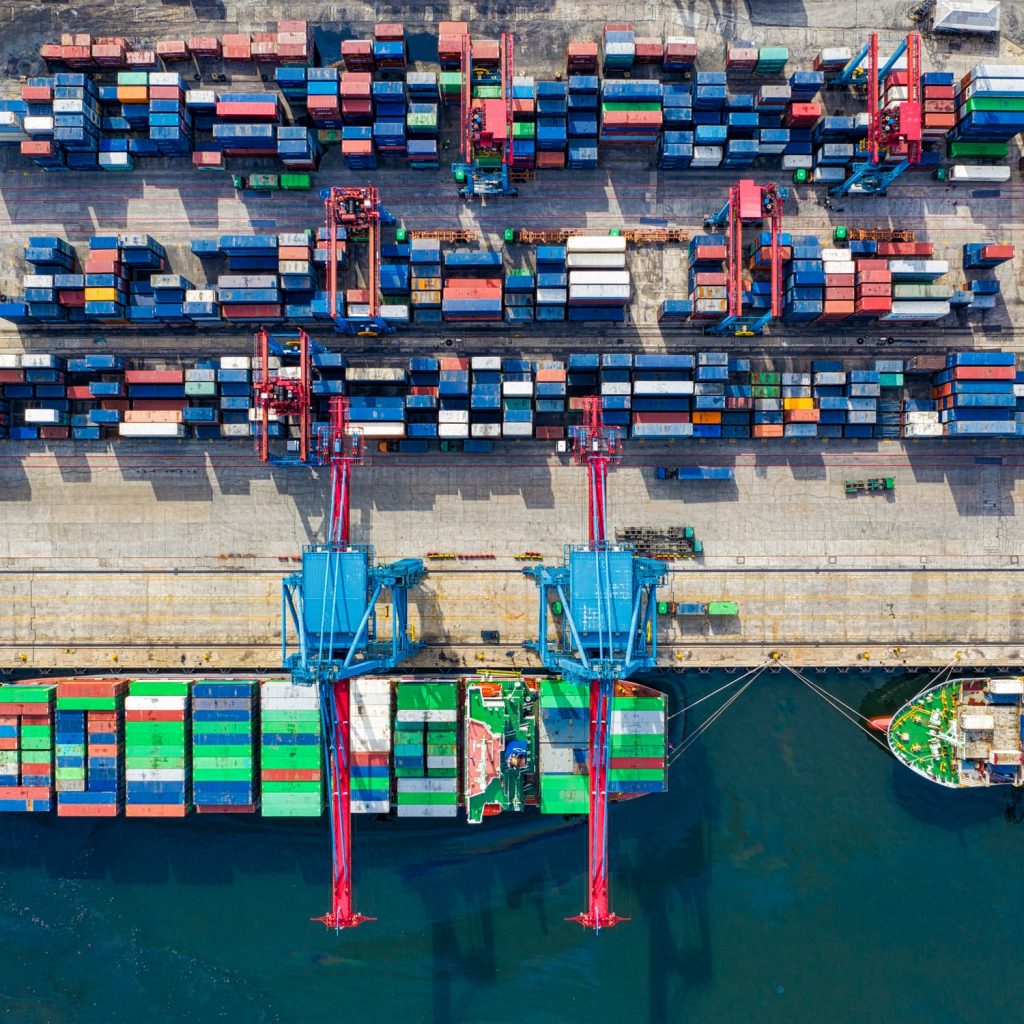Sourcing, sourcing, sourcing. Hardly any other word has had such an impact on purchasing in recent years as this one. While sourcing itself is just another word for procurement, the different sourcing strategies offer versatile procurement channels and methods. But which strategy is best suited for your company? Global Sourcing, Modular Sourcing or Forward Sourcing? In our guide we summarize the most important strategies and help you making the right choice for your purchasing.
Single Sourcing – close cooperation, high risk
In single sourcing, also known as single source procurement, Purchasing procures a material type from only one vendor. If there is an involuntary restriction to one supplier, for example due to a monopoly situation, this is referred to as sole sourcing. Single sourcing is based on long-term cooperation between the procurement department and its supplier. The organization of purchasing and logistics processes is coordinated directly with the supplier. In the course of this, Purchasing also shares its technical know-how with the supplier. The close cooperation allows accurate predictions as well as joint process investments. A prerequisite for effective single sourcing is that both sides are highly cooperative.

Single sourcing usually involves a single supplier handling large quantities. This ensures that the experience curve in production drops and larger production batches are possible. The resulting increase in efficiency leads to degression effects in process cost accounting. At the same time, transport costs are reduced because logistics processing can be precisely planned with only one supplier, for example through optimized transport windows. In addition, the number of suppliers also reduces the effort involved in checking incoming goods. This is because there is usually a strong relationship of trust between the customer and the single source supplier, in which the customer can rely on the consistently good quality of the delivery. Furthermore, purchasing can reduce capital commitment and increase liquidity through just-in-time or just-in-sequence.
However, the close relationship between purchasing and supplier creates a high degree of dependency. If unexpected interruptions in production occur on the part of the supplier, the purchasing department might face supply shortage. This can have a direct impact on sales. However, Purchasing rarely has a safe option for emergency cases. This is because single sourcing tempts one to overlook the competition on the procurement market. Thus, purchasing loses comparability in supplier evaluation and risks paying high prices. And even if a better supplier is found, a change often turns out to be risky. Because the new supplier must be able to seamlessly replace his predecessor. Due to a lack of experience, this is usually complicated. The result can be delays in the delivery process or loss of quality. Buyers who use a dual sourcing strategy are on the safer side.
Dual Sourcing – Better safe than sorry
A second supplier is assigned for the same material type and a dual-source purchasing is created. The aim of dual sourcing is to spread risks and protect against possible delivery problems. If a supplier has problems in processing, dual sourcing limits the negative effects on the own production. Depending on the capacity utilization, the purchasing department can order the missing quantities from its second supplier at short notice. Dual sourcing already considerably reduces the risk in the event of delivery interruptions. At the same time, however, this results in higher logistics and coordination costs, and efficiency benefits are reduced.
Multiple sourcing creates favourable conditions
Purchasers who pursue a multiple sourcing strategy want to be positioned flexibly on the market for the respective material type. Instead of assigning one or two permanent suppliers, the supplier with the most favorable conditions is selected for each purchase order. The aim of multi-source procurement is usually to achieve the best possible price advantages. The cooperation with a supplier takes place once instead of continuously. Therefore, a spot market relationship between purchasing and supplier is created. This means that transactions are made for immediate payment and delivered as quickly as possible. This has the advantage that the purchasing department can flexibly adapt to the prices of the suppliers, which can often lead to savings.

But the associated risks should not be underestimated. Anyone who implements such a sourcing strategy must create the right parameters in purchasing. Due to the unique nature of each order, purchasing and supplier cannot gather any experience with each other. However, this experience often determines the flawless handling of logistics. Instead of internalizing the common processes, each order starts from zero again. This can not only lead to quality and delivery problems, but can also lead to increased logistics costs and cancel out the price advantages gained. At the same time, the effort for buyers is higher. This requires more manpower, which in turn drives up personnel costs.
Whether a multiple sourcing strategy makes sense always depends on the given market and the type of material. If the products are easily exchangeable, multiple sourcing can be an effective option. For technically complex goods with demanding specifications on the other hand, other strategies should be used. One of these strategies could be modular sourcing, for example.
Boosting efficiency with Modular Sourcing
While classical sourcing strategies only assign one type of material per supplier, modular sourcing uses a more efficient approach. Individual products and material types are initially shipped from different suppliers to one module supplier. The latter assembles the individual parts and delivers the finished module to the customer. The concept can be illustrated with an example from the automotive industry:
An automobile manufacturer needs a module consisting of chassis, tires, brakes and transmissions for its vehicle production. Previously, Purchasing ordered the four parts from four different suppliers. The parts were assembled in the company’s own production facilities. But oftentimes the logistical and administrative effort resulted in additional costs and a lack of time. Instead of working on strategic issues, the buyers were increasingly occupied with the operative handling of the procurement processes. In order to relieve his department, the purchasing manager wants to implement a modular sourcing strategy. The original chassis supplier acts as the module supplier and is qualified for its new role in cooperation with the production department. The other three suppliers are coordinated by the module supplier. Negotiations, quality inspection and logistics are now only necessary with the module supplier. This enables the purchasing department to shift its focus on strategic tasks and creating added value.
In addition to the increased focus on strategic topics, modular sourcing can also reduce the interfaces between purchasing and suppliers. This increases efficiency in supply chain communication and reduces the potential for errors. Due to the close connection with the module supplier, problems can quickly be identified and eliminated. This minimizes risk and improves quality. In addition, a long-term cooperation with the module supplier enables attractive framework agreements and price reductions to be achieved. In addition, precisely defined quality standards make incoming goods inspections become unnecessary and logistics costs are reduced through proximity to the supplier.
However, a modular sourcing strategy is also associated with risks. For example, a change of supplier becomes more difficult the more intensive the relationship with the module supplier is. This also results in a strong dependency on purchasing, which can become costly if the supplier raises prices as a module supplier usually cannot be replaced overnight.
Global Sourcing – More than just a trend
One of the first major global sourcing projects in purchasing was carried out by GM and Opel in the 1990s. At that time, the “Global Competition” approach was used in order to also consider international suppliers. The company’s own buyers in the local country markets were told to obtain offers from their regular suppliers. While initially the focus was only on price comparisons, it quickly became clear that the process management of German medium-sized suppliers was also improvable in many cases. This enabled GM and Opel on the one hand to reduce their purchasing prices through global competition and at the same time to adapt the processes of their German regular suppliers to international standards.

The example from the 1990s illustrates clearly which effects can be realized with global sourcing. Empirical estimations show that global sourcing can save as much as 30 percent in price with additional time, quality and flexibility advantages. In order to effectively carry out such a project, however, a number of basic conditions must be met. These are intended to minimize the risk and ensure smooth project execution. They include political stability in the procurement market, trade and legal security, flawless communication and an adequate digital and logistics infrastructure. If these and some other factors are not present, a global sourcing strategy can damage purchasing instead of helping it. This can result in exorbitant transport costs, exchange rate risks, or quality degression. If, on the other hand, it is possible to keep the risks within limits, other valuable effects can be exploited in addition to cost advantages. For example, a particularly strong economy in the target country can work in favour of purchasing. Addressing international suppliers, as can be seen in the example of Opel and GM, also increases the pressure on domestic regular suppliers. This way, even the German market leaders can be put under pressure by global competitors. At the same time, involvement in international procurement markets makes it possible to build up new sales potential. A new procurement market becomes a new sales market at the same time.
Forward sourcing accelerates product development
Forward Sourcing, also known as Early Supplier Involvement, means forward-looking procurement. The supplier is involved in the product development process at an early stage. This approach is reinforced by the application of the simultaneous engineering principle. Here, process steps are not carried out one after the other as usual, but as simultaneously or overlapping as possible. Forward sourcing pursues two primary goals. On the one hand, the development time is to be reduced by appropriate measures. These measures include the parallel research and development work of various suppliers or the focus on one’s own core competencies. The second goal is to reduce product complexity and development costs. Valuable savings can be achieved in the area of product development through worksharing based on efficient knowledge management and optimization of the overall design effort. However, it is important to keep an eye on potential acceleration costs. Otherwise, forward sourcing can quickly change from an innovation engine to a cost trap.
Sourcing is not a sure-fire success
In addition to the strategies mentioned above, numerous variations or combinations of the different sourcing types exist in practice. Each company must choose the optimal approach individually, considering a wide range of factors. For example, company size, quality standards or the geographical location influence the requirements for a functioning sourcing strategy. Procurement markets of product groups differ fundamentally, so a single strategy can rarely be applied for all product groups. Rather, buyers should know the whole range of methods and be able to implement them practically. This also includes taking the risks of the respective strategies into account and evaluating them for one’s own company.
Contact
Kloepfel Group
Christopher Willson
rendite@kloepfel-consulting.com
Phone: +4921187545323
